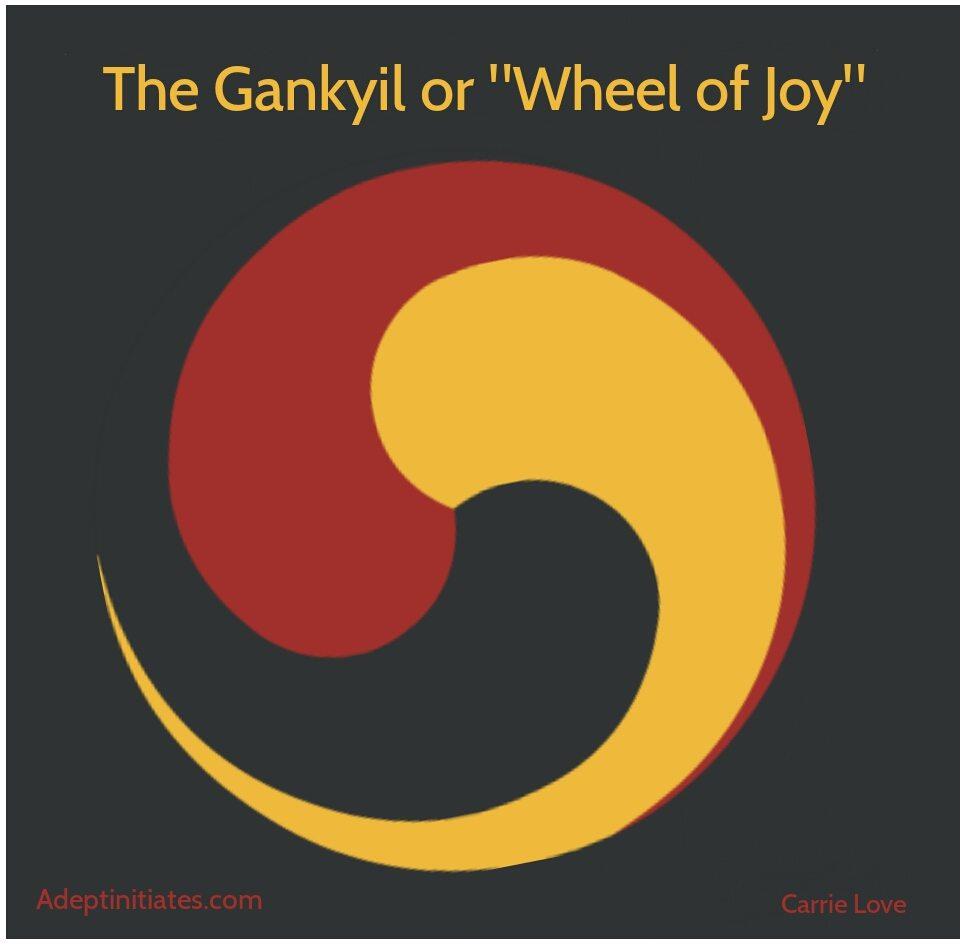The Gankyil aka Wheel of Joy:
The Gankyil also known as “wheel of joy” is an East Asian Buddhist and Tibetan symbol made up of three interconnected, swirling blades. It is very similar to the Ancient Chinese yin-yang symbol, except it usually has three, sometimes even four swirls. The word Gankyil is composed of two Tibetan words, “dga” which is used to describe all forms of pleasure, delight, and joy, and “khyil” which means to circle or to spin. In Sanskrit Gankyil translates to ãnanda-cakra and has been symbolically compared to the heart of the cosmic body, which is said to be the epicenter of the legendary and mythical Mount Meru. The three swirls can also be compared to the holy trinity, taking on different forms and terms throughout differing sects, and can even take on different forms and terms within the same sect as the disciple ascends, graduates, or is initiated into higher teachings.
Dzogchen aka Great Perfection:
In the Dzogchen teachings also known as Great Perfection (“rdzogs” = perfection, and “chen” = great), the Gankyil is referred to as the “Ground or Base.” The three spirals of the Ground represent three different qualities of Buddha-nature. The three spirals, although different, can be seen as fundamentally one in nature, and in a higher state of awareness the Gankyil or Ground can symbolize primordial energy, believed by some to be a sacred tool capable of guiding one to self-realization, and cosmic or ultimate truth.
Words of wisdom from great masters:
Namkhai Norbu is a revered Dzogchen teacher who was recognized as the mindstream emanation, a “tulka” at the early age of only of two. He further explains the symbolic meaning behind the Gankyil in his book, The Crystal and the Way of light:
“Realization is not something that must be constructed; to become realized simply means to discover and manifest that which from the very beginning has been our own true condition i.e. the Base. In Dzogchen tradition the path consists of remaining in the unveiled, manifest condition of the primordial state. The Gankyil, or “Wheel of Joy,” can clearly be seen to reflect the inseparability and interdependence of all the group of three, and since Dzogchen, the Great Perfection, is essentially the self-perfected indivisibility of the primordial state, it naturally requires a non-dual symbol like the Gankyil to represent it.”
In the ‘Prayer of Kuntuzangpo,’ Gonpa Zangthal, the highest Dzogchen teachings of the Northern Treasures tradition states,
“From the beginning you beings are deluded, because you do not recognize the awareness of the ground.”
Although, those are some very strong words, let me end this by saying these teachings are not the only way to self realization or in finding truth, and it should also be noted that the Gankyil, Ground, or Base is not the right way, nor the wrong way. Instead, it should be seen as the middle way realization.
© Written by Carrie Love




